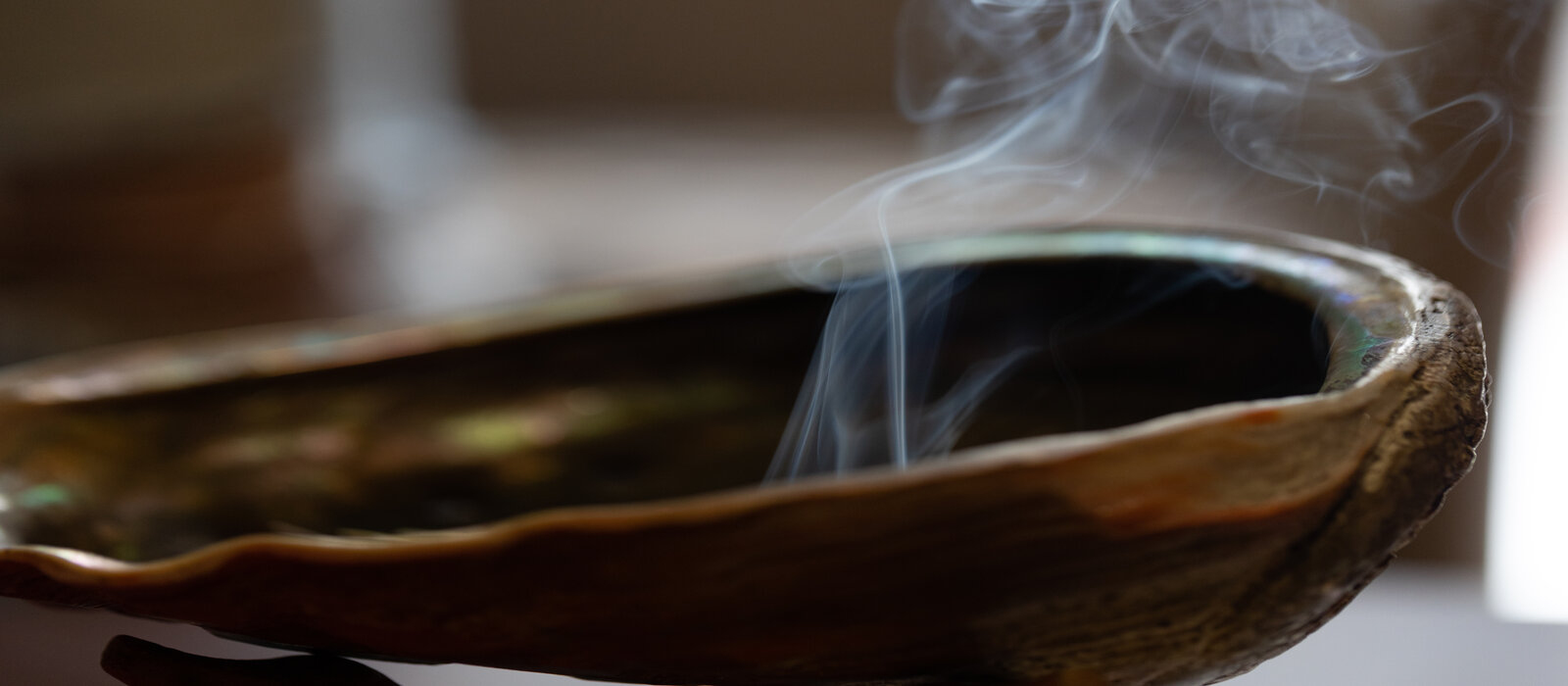Across Turtle Island, it is a common practice for many First Nations and Métis communities to burn traditional medicines (sage, sweetgrass, cedar, and/or tobacco) in an abalone shell with smoke rising up to the Creator. This practice is called ‘smudging‘. Depending on the individual and/or Indigenous group that is partaking in this ceremony, there are sometimes different beliefs associated with the smoke, and there may be different ceremonies and protocols.¹
‘Smudging’ is a purification and cleansing ceremony that works against negative beliefs and thoughts from a person or a place. Because smudging is vital to so many Indigenous Peoples, many environments are increasingly modifying their policies and operations to accommodate smudging within their buildings by designating certain areas for smudging. At Carleton University, the 2020 Kinàmàgawin Report was released and specifically addresses the need for smudging on campus:
- Call 5: We call for targeted fundraising toward the creation of additional Indigenous-focused space on campus, and towards the consolidation of Indigenous services for students,
staff and faculty - Call 28: We call for the revision of the Traditional Medicine Use Policy based on the Ontario Human Rights Code for the purpose of supporting Indigenous students, staff, and faculty
Over the past few years, the Carleton community has worked tirelessly to create smudge-friendly spaces to reduce the barrier of engaging in Indigenous spirituality and ceremony.
